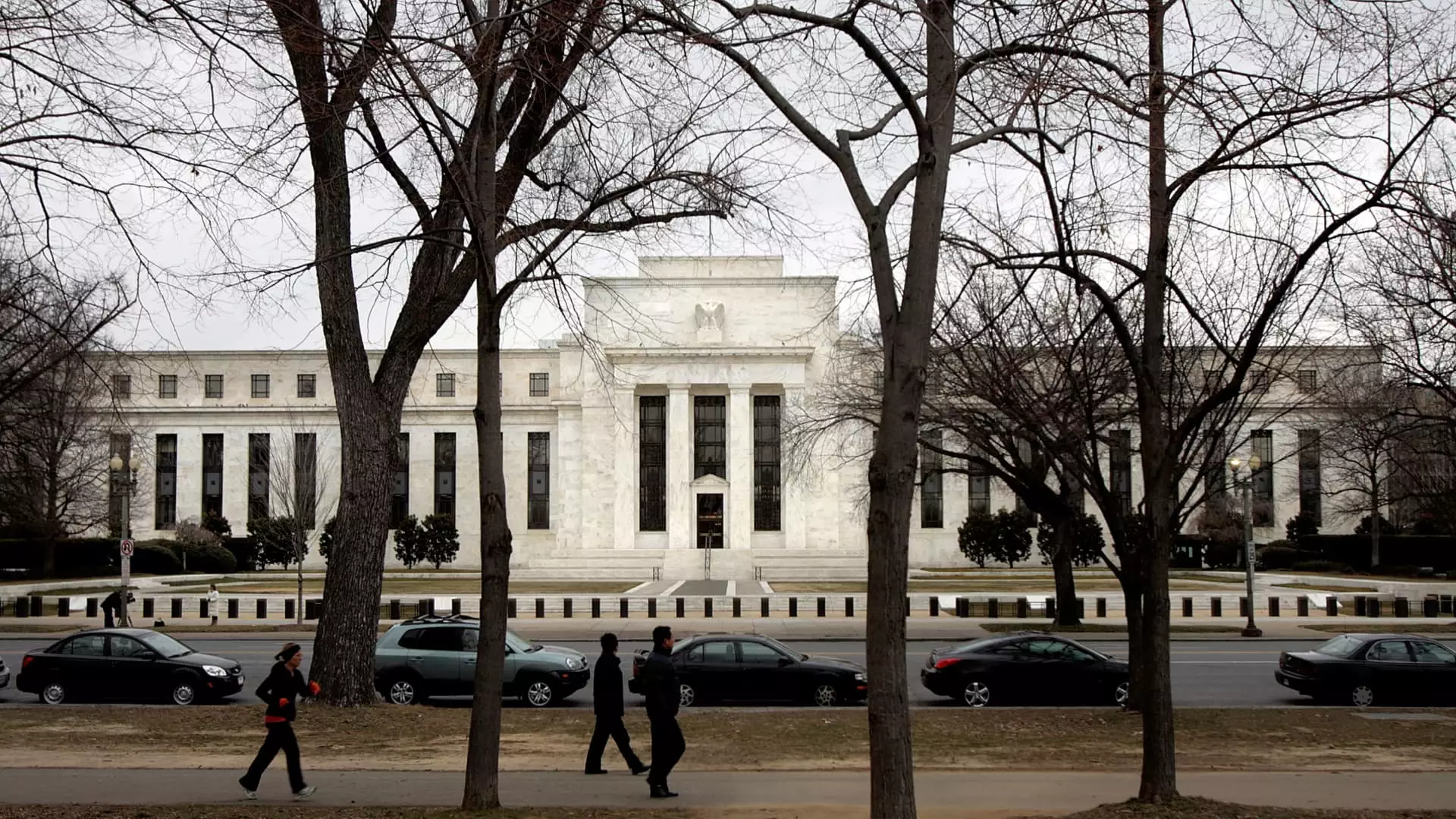The recent announcement from the Federal Reserve regarding its decision to maintain unchanged interest rates has stirred up considerable conversation among economists and consumers alike. This analysis dissects the current economic climate shaped by inflationary pressures and the Fed’s strategic policies, aiming to illuminate the implications for consumers in the upcoming year.
The Federal Reserve’s decision to keep interest rates steady comes in the context of persistent inflation, which has remained above the Fed’s target of 2%. Despite last year’s aggressive rate cuts, which totaled a full percentage point, the lingering pressure of high prices and President Trump’s vocal calls for reduced rates pose new challenges for the central bank. According to the latest CNBC Fed Survey, expectations point towards only two potential rate cuts for the remainder of the year—mirroring the forecasts shared by Fed officials.
Michele Raneri, vice president of U.S. research and consulting at TransUnion, noted that while inflation fears have somewhat diminished, they continue to loom. This candid acknowledgment indicates the intrinsic complexity the Federal Reserve faces in balancing inflation control with economic revitalization.
Consumers are in a precarious position, grappling with both soaring prices and the resultant high borrowing costs. With inflation being a prominent concern since the pandemic’s onset, the Fed’s prior series of interest rate hikes led to the benchmark rates reaching heights not seen in over 22 years. This environment, characterized by rising costs of living, underscores a critical issue: Americans are increasingly burdened by economic constraints that seem to offer little relief in the near future.
As the Federal Reserve tinkers with rates, the ramifications are far-reaching, particularly for everyday borrowing expenses. Banks lend to each other at the federal funds rate, which indirectly influences lending practices that consumers rely on for credit cards, mortgages, and personal loans. The unfortunate reality is that even if the Fed begins to decrease rates, many households are unlikely to see immediate relief from the financial strain.
The trajectory of borrowing costs in 2025 remains a critical concern for various sectors of the economy. As evident from recent figures, average credit card interest rates have surged from 16.34% in March 2022 to over 20%, creating a challenging environment for consumers relying on credit. Bankrate’s chief financial analyst, Greg McBride, predicts that while some decreases in interest rates are on the horizon, they will not be substantial enough to provide genuine relief for overwhelmed borrowers.
For hopeful mortgage seekers, the reality is equally sobering. Although rates for 15- and 30-year mortgages are fixed, and thus less susceptible to fluctuations, the repercussions of high borrowing rates combined with escalating home prices have diminished overall purchasing power. Bankrate cites the average rate for a 30-year fixed mortgage now exceeding 7%, anticipated to hover around the 6% mark throughout 2025, which only compounds the pressure for potential buyers.
In the automotive market, the story remains disappointingly similar. The combination of rising vehicle prices and increasing interest rates for auto loans means that affordability is dwindling for many buyers. Edmunds reports an average five-year loan rate reaching 5.3%, coinciding with record-high average transaction prices of new vehicles, nearing $50,000.
While federal student loan rates are fixed, high college costs also pose their own sets of financial burdens. Undergraduates accessing direct federal loans for the upcoming academic year will notice an increased rate of 6.53%, up from 5.50%, indicating the demand for careful financial planning among students as they embark on their educational journeys.
Amid these financial tribulations, it appears that savers might find a silver lining. With the Fed’s rate policies correlating to yield adjustments, high-yield savings accounts currently offer attractive returns. As pointed out by LendingTree’s chief credit analyst, Matt Schulz, although the Fed’s decision to hold rates steady presents challenges for those with debts, it simultaneously provides an opportunity for savers to capitalize on high-interest accounts in a period that has not seen such yields in over a decade.
As the financial landscape evolves, the interplay between the Federal Reserve’s policies and consumers’ demands remains significantly complex. The projections for 2025 reveal a mixed bag of concerns regarding debt and opportunities for savings. Therefore, consumers are advised to adopt strategic approaches to overcome the economic hurdles that lie ahead, whether it involves seeking lower-interest loans or capitalizing on favorable savings options. In an era marked by uncertainty, informed financial decisions remain paramount for navigating the road ahead.

